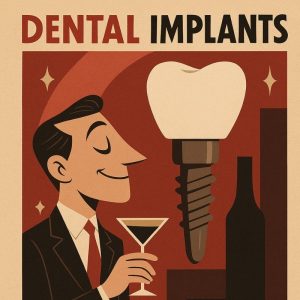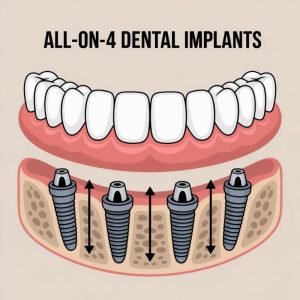You’ve just been told you need a dental crown. While you understand it’s necessary to protect and restore your tooth, a major question immediately comes to mind: does insurance cover crowns? It’s one of the most common questions we hear from patients, and the answer is crucial for planning your treatment.
Navigating the world of dental insurance can feel complicated, but you don’t have to do it alone. This guide will break down how insurance typically handles dental crowns, what factors influence your coverage, and how you can maximize your benefits.
The Big Question: Are Crowns Considered a Basic or Major Procedure?
The key to understanding your coverage lies in how insurance companies categorize dental procedures. Most plans group treatments into three categories: preventive, basic, and major.
- Preventive Care: This includes routine exams, cleanings, and standard X-rays. It’s usually covered at the highest level, often 80-100%.
- Basic Procedures: This category typically includes fillings, simple extractions, and sometimes deep cleanings. Coverage is usually lower than preventive, often around 70-80%.
- Major Procedures: This is where dental crowns almost always fall. This category also includes bridges, dentures, and dental implants. Coverage for major procedures is typically the lowest, often around 50%.
So, the straightforward answer to “does insurance cover crowns?” is yes, but usually at a lower percentage (like 50%) than other procedures. This means you will likely be responsible for a portion of the cost.
Medically Necessary vs. Cosmetic: The “Why” Matters
Insurance companies are primarily concerned with the medical necessity of a procedure. They want to know why you need the crown.
When is a Crown Considered Medically Necessary?
Your insurance is most likely to provide coverage when the crown is needed to restore the function and health of a tooth. This includes situations where a crown is required to:
- Repair a tooth that is severely decayed or broken.
- Protect a tooth that has undergone a root canal procedure.
- Support a tooth with a very large filling that is at risk of fracturing.
- Restore a tooth that is cracked or severely worn down.
- Serve as an anchor for a dental bridge to replace a missing tooth.
In these cases, the crown is not just an option; it’s a necessary treatment to save the tooth from further damage or extraction. Insurance providers see this as a valid, health-related expense and will typically apply your benefits.
When is a Crown Considered Cosmetic?
If you want a crown purely for aesthetic reasons—for example, to cover a discolored but otherwise healthy tooth—your insurance company will likely classify it as a cosmetic procedure. Most dental insurance plans do not cover treatments that are performed solely to improve appearance.
It’s important to have a clear diagnosis from your dentist. At Dental Theory, we provide detailed documentation to your insurance company explaining the medical necessity of your crown to ensure you receive the maximum coverage you are entitled to.
Key Factors That Determine Your Out-of-Pocket Cost
Even when insurance does cover crowns, several factors in your specific plan will affect how much you actually pay.
1. Your Deductible
A deductible is a fixed amount you must pay out-of-pocket for dental services before your insurance plan starts to pay. For example, if your deductible is $50 and you haven’t had any other treatment that year, you’ll have to pay that $50 towards the crown before your 50% coverage kicks in.
2. Coinsurance and Coverage Percentage
As mentioned, most plans cover crowns at around 50%. This is your coinsurance. If the total cost of your crown is $1,200 and your plan covers it at 50%, your insurance would pay $600 (after your deductible is met), and you would be responsible for the remaining $600.
3. The Annual Maximum
Nearly all dental plans have an annual maximum—the most your insurance will pay for your dental care in a single plan year (which may or may not align with the calendar year). A common annual maximum is between $1,500 and $2,000. If the cost of your crown and other dental work exceeds this limit, you will be responsible for paying the difference, even if the procedure is covered.
4. Waiting Periods
Some dental plans have a waiting period for major procedures like crowns. This means you have to be enrolled in the plan for a certain amount of time (often 6 to 12 months) before you are eligible for coverage on that treatment. If you need a crown during this waiting period, you may have to pay the full cost yourself.
How to Get the Most from Your Insurance
Understanding your plan is the first step. Here’s how you can be proactive:
- Request a Pre-Treatment Estimate: This is the most important step you can take. Our office can submit a pre-treatment estimate (also called a pre-determination) to your insurance company on your behalf. Your insurer will review the proposed treatment and send back a document detailing exactly what they will cover and what your estimated out-of-pocket cost will be. This eliminates surprises and helps you budget accordingly.
- Know Your Plan Details: Take some time to review your insurance policy or call your provider to understand your deductible, annual maximum, and coverage percentages for major services.
- Talk to Your Dental Office: The team at your dental office is a valuable resource. At Dental Theory, we have experience working with many different insurance providers. We can help you understand your benefits, submit claims and pre-treatment estimates, and explore financing options if needed.
So, while the question “does insurance cover crowns?” has a nuanced answer, the good news is that in most medically necessary cases, you can expect some level of financial help from your plan. By working with an experienced dental team, you can navigate your benefits with confidence and get the essential care you need to protect your smile.







